Thinking development: features, techniques and exercises

Each of us needs to have a developed thinking in order to fully live and work. Without thinking, a person would not be a reasonable person. This means that it is necessary to begin to develop mental activity from childhood, without stopping to engage in it even in adulthood. Then you will always feel like a complete person.



Peculiarities
You need to understand that thinking is called the process of cognition. It has its own stages of development, requiring constant improvement and the formation of thinking skills, with the help of which a person can acquire new techniques and ways of thinking. And also this process contributes to the further development of gray matter.
In addition, thinking in people develops in a purely individual form due to the fact that the development process depends on the person's age and on the environment. Let's consider this issue in more detail.

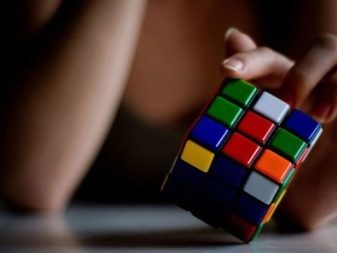
In adults
In this case, the basic thinking abilities are already fully formed. However, it should be noted that their quality directly depends on the conditions of formation and characteristics.
-
A person always relies on data from past experience. Therefore, thinking is considered a mediated factor. This once again confirms that a formed personality can compare past experience in its memory with a newly arrived event. For example, if an adult looks out of the window at a wet road, he will understand that it had rained earlier.
-
The thinking of any individual is based on previous practical experience, which displays general concepts and patterns of life.
-
Adult thinking reflects the connections between past experiences and summarizes them.The connections of different things and events are processed and detected, and then classified in consciousness.
-
With the right thinking, connections between various objects are reflected in verbal form. Therefore, the thinking of an adult and his speech are inseparable from each other. As a result, a person can easily express thoughts in words and convey them to other people. Thanks to thinking, human memory can store past events, despite their remoteness, and even look into the future.
-
The thinking of any individual depends on practical actions and directly relies on them when making any decision or action.

In children
Adult thinking and childish thinking differ greatly in their quality. However, in both those and others, mental activity has a conditioned character and is based on various factors.
Infant thinking is sensitive, since at this age there is a sensitivity to external manifestations from the outside world. Information comes from the outside through hearing and touch.
At this moment, thinking perceives these factors and gives out adequate reactions.
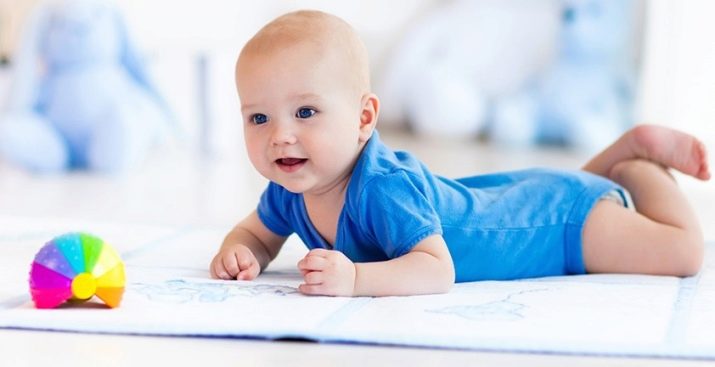
At 2 years old the child simply examines his surroundings. At 4 years old observation begins to appear in him, and the very first images appear in his consciousness. From 3 to 5 years the ability to take any action is formed and developed. A logical-verbal type of information comprehension is being formed.
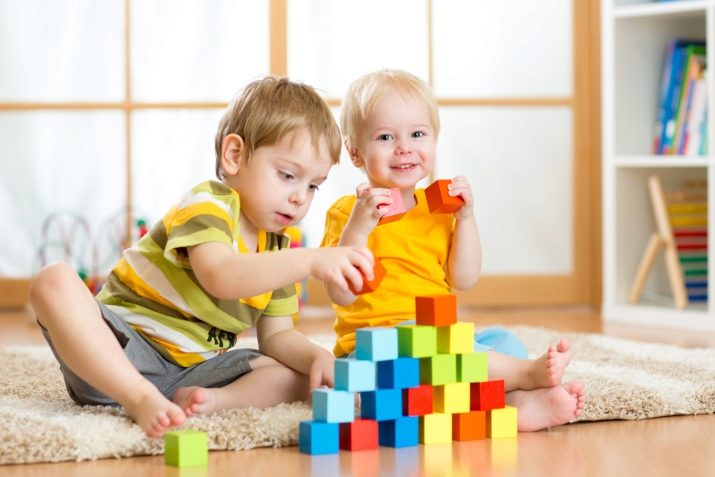
At 6-7 years old verbal-logical thinking appears, and it includes the functions of learning and cognition. At this stage of development, junior schoolchildren are intensively assimilating diverse information. If at an early age thinking is only gaining momentum in its development, then from 8-10 years old it is actively developing, and from 11-14 years old the role of cognition of the surrounding world comes to the fore.

Thinking in children develops in several stages.
-
In 1.5-2 years, visual-active thinking develops. The child learns information through tactility. Variable actions allow you to better understand the surrounding objects and the world.
-
At 3-4 years of age, visual-figurative thinking develops. Its formation is intense. The child's mind at this time thinks and operates with images.
-
At the age of 5-7, verbal-logical thinking develops. With its help, an analysis of events taking place in the surrounding world is carried out.
-
Creative thinking is present in the minds of all children. The main thing is that adults contribute to its development.
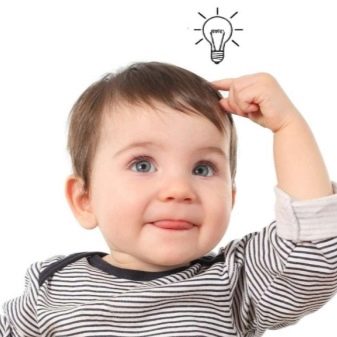

In addition, it must be remembered that mental operations are constantly taking place in the mind of the child. Let's list them.
-
From about 2 years old, children begin to look at and compare objects. Gradually, from comparing simple objects and sounds, consciousness moves to comparing more complex positions, such as taste, smell, properties of materials, and so on.
-
By the age of 6-7, the generalization of all events and objects that surround the child is strongly developing. That is why children actively improve their speech skills.
-
The ability to analyze in thinking allows you to divide events and objects into separate parts for their further study and memorization.
-
With the help of synthesis, information is combined. Therefore, the child quickly learns to write and read.
-
When identifying the similarities and differences of surrounding objects and events, they are classified. Therefore, the child can distinguish toys by color and composition.

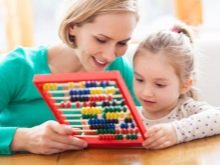

Views
Specialists using different methods were able to identify some directions in thinking that are characteristic of a person. Let's consider them in order.
Mathematical thinking is abstract and theoretical. In this case, the objects lack materiality, but they are also interpreted based on some decision.
Mathematical thinking differs from ordinary thinking in that in this case there is an ability to critically perceive the environment.At the same time, a person tries to get to the bottom of the necessary information and understand the essence of various manifestations. The value of this thinking lies in the fact that a person can:
-
decompose the problem into points, thereby finding the answer faster;
-
understand that all problems have an answer;
-
to realize and accept the problem, then not “give up”, but find a solution.
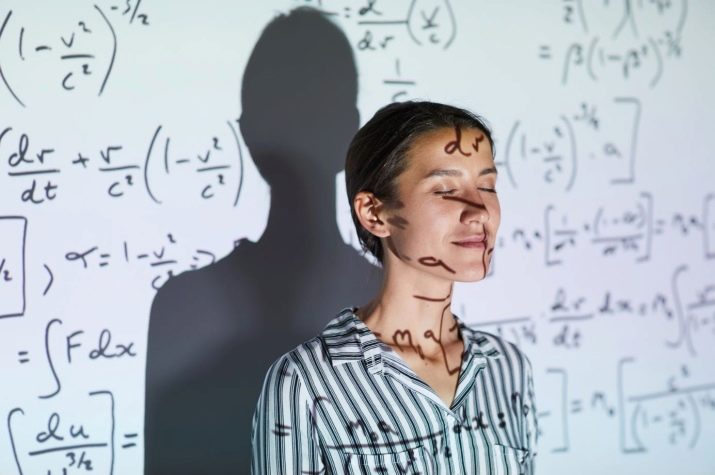
An individual who knows how to think in a mathematical way gradually gets used to holding a large amount of information in the brain and to using it when needed.... In addition, such an individual may have the skills of a "sober" assessment of information, and this factor helps him to distinguish real information from false.
Mathematical thinking contributes to making the right decisions regarding life aspects, and also warns against postponing the case on the back burner.
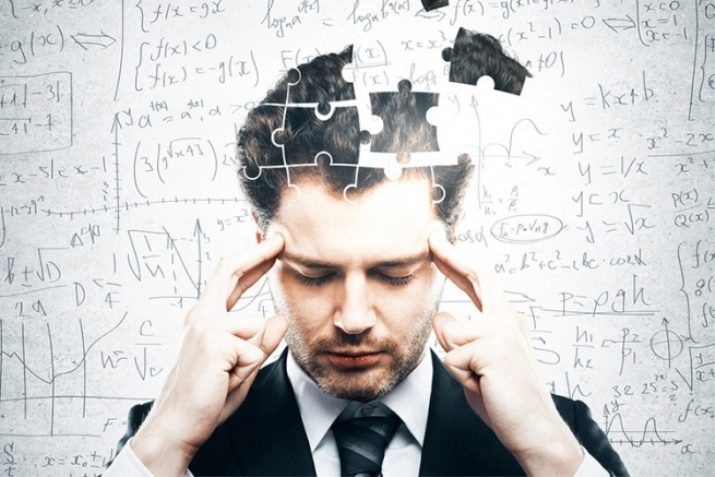
Consider the types of mathematical thinking.
-
In 2-3 years, topological thinking develops, which is directly related to the generality of logical operations.
-
Behind topological thinking, ordinal thinking appears, which helps to unite all actions into a single whole. Therefore, it adheres to the order from initial to final.
-
Next, metric thinking improves, which controls quantitative components and operates with numbers.
-
Designers or those who like to combine information tend to think algebraically.
-
Non-standard behavior is introduced by projective thinking. And also such thinking endows a person with extraordinary intelligence.

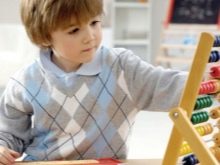
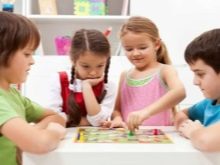
Tactical thinking makes it possible for a quick and efficient course of thought processes. Such actions are aimed at a quick and rational solution to any problems. There are basic forms in this direction:
-
effectiveness - it is associated with the practical activities of a person;
-
when a person goes to a goal, and unforeseen circumstances arise on his way, then improvisation helps to get around them;
-
efficiency of thinking is fast and clear;
-
you need to be aware that any guess may not be very accurate, so in this case probability applies.

Entrepreneurial thinking is practical. A businessman is distinguished by the enjoyment of his work. The basis of this thinking is the correct setting of goals.
Structural thinking is responsible for the union between facts and connections. A person loves order and always lays out his thoughts in such a way as to understand the problem, thus he lays it out "on the shelves."


Technical thinking contributes to the accumulation of technological experience and knowledge in this area. In addition, with the help of such thinking, labor education and comprehension of labor activity occurs, and at the same time a person strives for a creative approach and rationalization in production.
Engineering thinking provides for creative activities that are combined with a systematic technical approach. At the same time, standard and non-standard approaches to the implementation of activities are used, thereby developing professional competence.
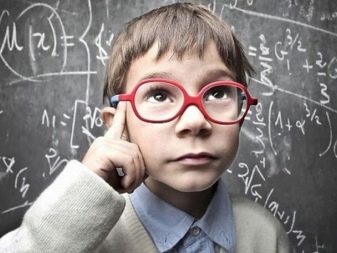
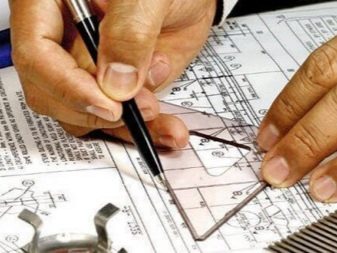
How to define low level of thinking?
Indicators of a weak level of thinking development are expressed in poorly developed logic. And also a person has problems with expressing his thoughts both in writing and orally. Typically, such individuals spend a large amount of time to solve this or that problem.
Know: the higher the level of thinking, the smarter the person.
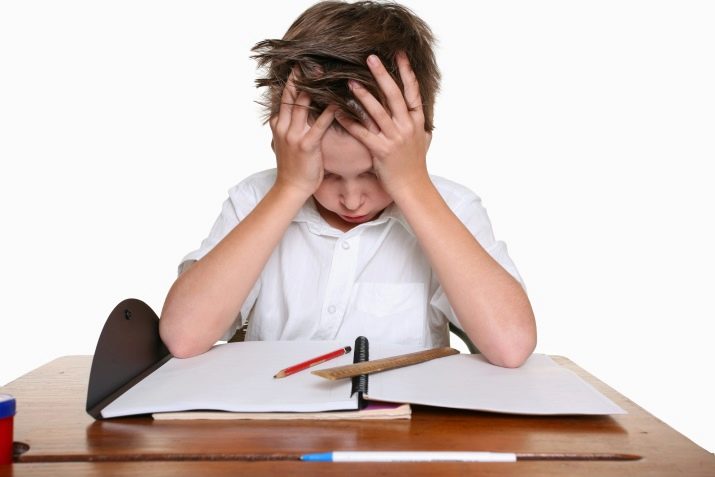
Cognitive psychology represents a person's thinking in the form of certain directions following each other. Processes take place in each of them. The directions differ from each other by factors associated with thought processes and the degree of depth of these processes.
These directions can be successfully tested using special methods.... A high result after summing up the test results will indicate a high intelligence of the subject.However, it may be the other way around: a low level of thinking is also determined by testing.

Consider the techniques that help determine the level of high or low thinking:
-
by identifying an extra link or component;
-
by memorization;
-
by organizing further logical construction, specified earlier;
-
by identifying the basis;
-
by solving graphic tasks, as well as puzzles and monograms.
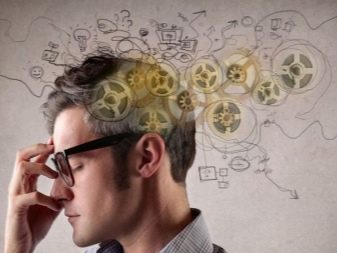

Development methods
There are the most acceptable ways to develop thinking relatively quickly. Let's consider them.
-
Reading contributes to the rapid development of thinking. Thanks to reading, our brain analyzes and comprehends the information offered for consideration. It doesn't matter what kind of literature you prefer. The main thing is that the process is interesting to you and captures you completely.
-
Try to change your location frequently. Start taking different routes to work. And do it consciously (for example, consider the surrounding objects). Travel as much as possible. This is the most effective technique as it requires a lot of effort from your brain. In an unfamiliar place, you will have to think a lot in order to take advantage of the most comfortable accommodation options. Such efforts lead to the development of the brain and, therefore, to the development of thinking.
-
Diversify your habits. There are different ways here. For example, force yourself to write letters not with your usual right hand, but with your left (and vice versa, if you are left-handed). If possible, allow yourself to change your usual life schedule. Instead of passive relaxation, go to the zoo or the cinema.
-
Develop your memory. As your memory improves, you will gradually begin to think better, which means that there will be a rapid increase in the level of your thinking.
-
In recommendations for increasing thinking, you can safely include drawing. This method of productive intelligence enhancement can be offered to both adults and children.
-
The means of increasing intelligence include communication with other people. Thanks to friendly conversations, you can learn a lot of interesting and useful information.
-
Playing chess or learning to play a musical instrument will also help solve the problem.
-
Step out of your comfort zone more often. Do not look for easy ways, but try to complicate the task in order to get the most benefit.
-
If you yourself are unable to solve the problem with raising the level of thinking, then seek help from specialists. Attending various trainings will ease the task at times.

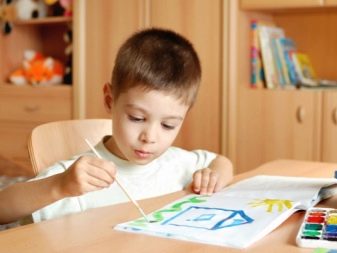

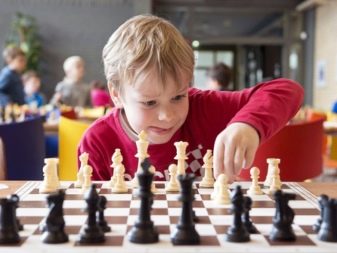
There are other techniques as well. For example, TRIZ system (theory of inventive problem solving). It includes certain methods, laws and algorithms, with the help of which you can find a rather non-standard solution to get out of the problem.
An engineer and writer invented such a miraculous method Genrikh Saulovich Altshuller.
With its constant use, thinking in both children and adults does indeed become strong.
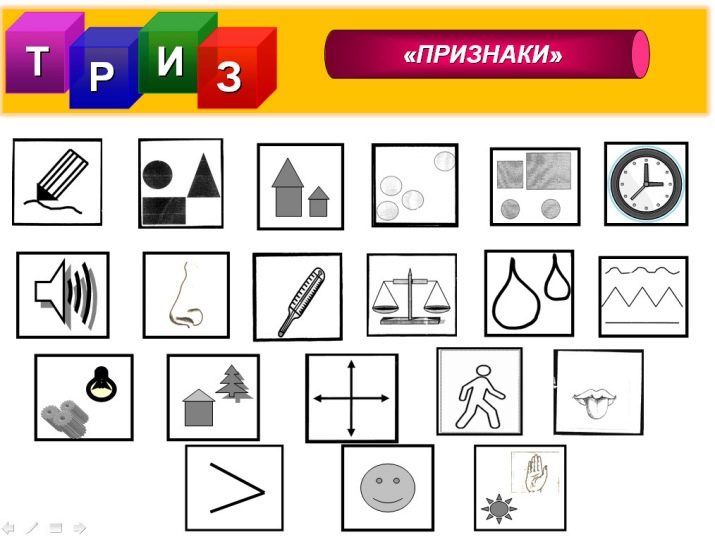
And also after some observations, the teachers found out that the use of TRIZ-pedagogy helps to quickly develop a child's mind and make it flexible. Students are motivated to master new knowledge and skills. For example, “Brainstorming”, used in TRIZ, develops the ability for systems-logical thinking.

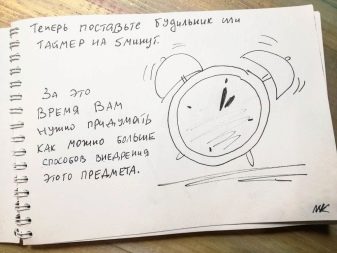
Assignments for different types
Let's consider some tasks for developing thinking.
Visual-figurative
This direction includes methods and processes that are inherent in the figurative solution of any issues. It is here that a visual representation of the problem is assumed, the use of its constituent parts occurs. To develop the thinking in question, you can use a set of methods that are suitable for both adults and children.
-
Here's an exercise: Describe the words "happiness" or "wealth" using only two nouns and one adverb. Choose new words each time for a change.
-
Try to analyze this or that event day after day. For example, think about who you had to talk to during the day. Be sure to describe in your mind the clothes of the person (hairstyle) with whom you spoke. Remember other details and what was discussed. Also ask your child leading questions about the past day to develop his mind.
-
Do not stop your thinking activity for a minute. For example, when you walk down the street, then count the number of windows in a multi-storey building that you met on the way. Also try to calculate how many apartments can be located in it. Compare your result with the correct one. Children can also be involved in such exercises by asking them questions in a playful way.
-
When a natural phenomenon (lightning, rain) happens on the street, try to remember it, and after a while reproduce it in memory. And you can also describe from memory the kitchen of your friends, office space and much more.
-
If you were at a meeting where there were a lot of people, then try before going to bed to describe in memory the image of each of them, and also remember the topics of conversation.



Verbal-logical
The presentation of objects and their description is impossible without verbal and logical thinking. So, verbal-logical or verbal-logical thinking is needed when using speech structures and logical chains. Therefore, it must be developed using the exercises listed below.
-
Come up with one phrase and say it with different intonations. When you fully master this technique, then imagine how this same phrase would sound if it was uttered by your neighbor, friend, other people.
-
Irrational fears are very bad. Therefore, you need to get rid of them first. So you can remove unnecessary information from your consciousness and stop using useless monologues that "swarm" in your thoughts.
-
Try to read quickly. At the same time, do not miss out on detailed information and analyze it. Hard? Yes, it takes some training. Train and train your brain!
-
Cluster. To do this, write your question and enclose it in a square. Then, in a square, enclose the associative feelings that are associated with the question being asked. Connect the squares with lines. This will teach you how to put your thoughts together.
-
Games of this kind are suitable for children and adults. For example, sit in a circle and take turns reading tongue twisters. You need to start with the simplest ones, and then gradually move on to complex tasks. Puzzles can also be used.
-
For younger students, this technique is suitable. Sit in the room. Your little ones should look at objects and name them in an unusual way. For example, a table might be called a chair, a carpet might be called furniture, and so on. It will be funny and interesting.
-
Imagine that aliens have flown to you, and you explain simple earthly things to them. Talk about food or your dream. Children really like to play this way.



Visual-effective
It is called manual intelligence, and this kind of thinking is formed from a year and a half. Some children's entertainment can be used to develop it.
-
Cutting out various shapes from paper is always relevant among educators.
-
Smart stickers can be used to complete the whole picture. Such interesting activities will complement didactic exercises for training the mind.
-
Constructors, where there are plastic, wooden or cloth elements, will ensure the development of visual-effective thinking in both adults and children.
For example, you can cut an airplane out of paper and assemble it with your child, or make a house or a tower using glue and matches (sticks of the same length).
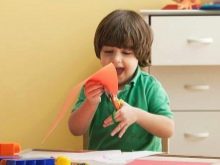


Remember that all tasks should be given to children in order of increasing difficulty.
Logical
This kind of thinking can be developed through reading. However, there are other methods that can help.
-
Use board games (sea battle, chess, checkers) or computer games to develop logic.
-
Finding logical chains will be an interesting experience for you and your child. You need to play like this: choose two words - "glass jar" and "water". Look for chains: water is poured into a jar, an empty jar, if closed with a lid, will not sink in water, water and jar are transparent.
-
Select objects involuntarily and try to connect them in meaning, making sentences. For example, combine the words “forest”, “mushrooms”, “animals” into one whole, making up sentences: “Animals live in the forest. Mushrooms grow in the forest. People go to the forest to pick mushrooms and often take animals (a dog) with them. "
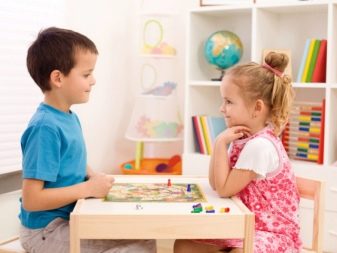

Creative
Absolutely all people need this thinking. Without a creative approach, a person will not be able to work fully. Therefore, it needs to be developed.
For example, it can be worked out using associations. To do this, choose 4-5 words at once in an involuntary order: dog, yard, flowers, mirror, path. A dog, flowers, paths may be in the yard, but a mirror will be superfluous on this list.

Plus, there are other techniques that can help you develop your creative mind quickly.
-
Ask yourself questions that will help you always find the truth. Let's list them: “Why am I doing this? Why shouldn't you do this? Why not? What happens if ...? " Be sure to answer these questions, and then you will never be wrong.
-
Use mind maps to find new ideas. To do this, you will need to take a blank sheet of paper and colored pencils. In the very center, draw the problem in the form of a picture. Circle it. Around figuratively depict all your thoughts and emotions that visit you when you see the picture. Connect the most significant ones. Then connect the secondary ones. Take another look at the picture. Delete unnecessary and you will see new possibilities.
How to develop thinking, see the video.








